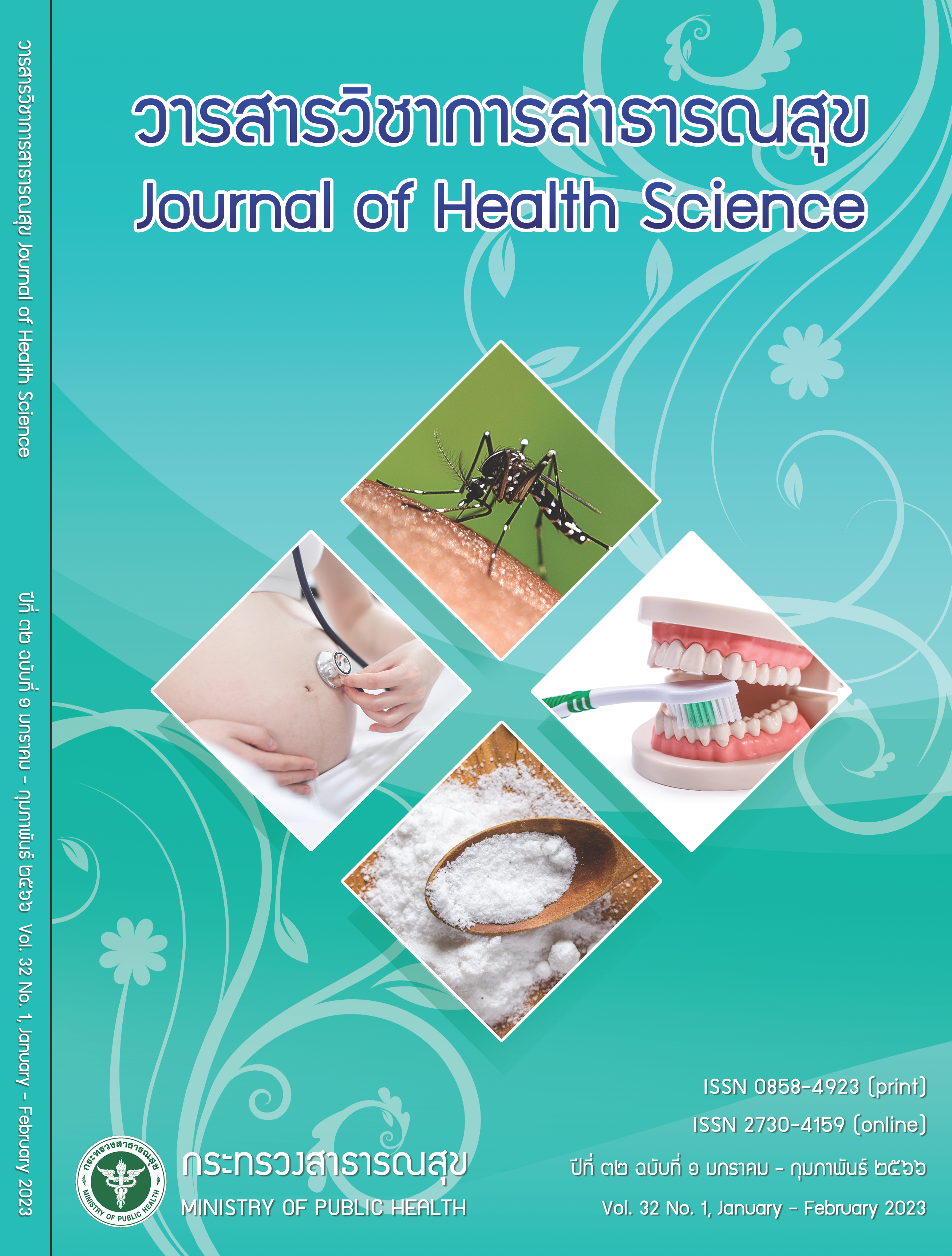Radiographic Imaging of Urolithiasis
Keywords:
urolithiasis, urinary system, diagnostic radiologyAbstract
A wide variety of calcifications may develop in the urinary tract. Calculi or Urolithiasis, is the most common form of urinary tract calcification. Urolithiasis is a health problem in Thailand which has high rate of recurrence. Urolithiasis are mostly contains calcium. This makes it visible as radio-opaque appearance (in the x-ray image). Although there are still limitations to characterise components of urolithiasis, nowaday radiographic images can be classified according to location, appearance, and relation to various pathologic conditions. Imaging of urolithiasis has improved over the years due to technologic advances and a better understanding of the disease process and becoming the investigation of choice for disease evaluation, especially the computerized omography (CT), which is not only leading to an accurate diagnosis in patient with stone disease but also useful in assessment of stone composition.
Downloads
References
Romero V, Akpinar H, Assimos DG. Kidney stones: a global picture of prevalence, incidence, and associated risk factors. Rev Urol 2010;12(2-3):86-96.
Liu Y, Chen Y, Liao B, Luo D, Wang K, Li H, et al. Epidemiology of urolithiasis in Asia. Asian J Urol 2018; 5(4):205-14.
Ziemba JB, Matlaga BR. Epidemiology and economics of nephrolithiasis. Investig Clin Urol 2017;58(5):299- 306.
วิศัลย์ อนุตระกูลชัย. โรคนิ่วในระบบทางเดินปัสสาวะ [อินเทอร์เน็ต]. 2557 [สืบค้นเมื่อ 18 ธ.ค. 2564]. แหล่ง ข้อมูล: https://sriphat.med.cmu.ac.th/th/knowledge-385
Trinchieri A. Epidemiology of urolithiasis: an update. Clin Cases Miner Bone Metab 2008;5(2):101–6.
ศูนย์วิจัยสุขภาพกรุงเทพในเครือ บริษัท กรุงเทพดุสิตเวชการ จำกัด (มหาชน). การสลายนิ่ว[อินเทอร์เน็ต]. [สืบค้นเมื่อ 12 ธ.ค. 2564]. แหล่งข้อมูล : https://www.bangkokhealth.com/articles/การสลายนิ่ว/
บรรณกิจ โลจนาภิวัฒน์. นิ่วในระบบทางเดินปัสสาวะ. ใน: วรพจน์ ชุณหคล้าย, อภิรักษ์ สันติงามกุล, บรรณาธิการ. Common urologic problems for medical student. พิมพ์ ครั้งที่ 1. นนทบุรี: บียอนด์เอ็นเทอร์ไพรซ์; 2558. หน้า 82-95.
ปิยะรัตน์ โตสุโขวงศ์, ฉัตรชัย ยาจันทร์ทา, ทศพล ศศิวงศ์ ภักดี, ชาญชัย บุญหล้า, เกรียง ตั้งสง่า. โรคนิ่วไต: พยาธิสรีระวิทยา การรักษา และการสร้างเสริมสุขภาพ. จุฬาลงกรณ์ เวชสาร 2549;50(2):103-23.
พลอยรัตน์ อุทัยพัฒนะศักดิ์ . ปฏิบัติตัวอย่างไร ห่างไกลการ เกิดนิ่วในทางเดินปัสสาวะ. วารสารควบคุมโรค 2562; 44(2):111-21.
สมาคมศัลยแพทย์ระบบปัสสาวะแห่งประเทศไทย ใน พระบรมราชูปถัมภ์. เอกสารแนบท้ายประกาศสำนักงานหลัก ประกันสุขภาพแห่งชาติ เรื่อง หลักเกณฑ์การดำเนินงานและ การจ่ายค่าใช้จ่ายเพื่อบริการสาธารณสุขสำหรับการให้บริการ รักษาผู้ป่วยโรคนิ่วในระบบทางเดินปัสสาวะ พ.ศ. 2556. ราชกิจจานุเบกษา เล่มที่ 130, ตอนพิเศษ 180 ง (ลงวันที่ 12 ธันวาคม 2556).
มนินทร์ อัศวจินตจิตร์. ปวดนิ่วเฉียบพลัน. ใน: เอกรินทร์ โชติกวาณิชย์, ธเนศ ไทยดำรงค์, ณัฐพงศ์ บิณษรี, เปรมสันต์ สังฆ์คุ้ม, บรรณาธิการ. Urological emergency ภาวะฉุกเฉิน ทางศัลยศาสตร์ยูโรวิทยา. สมาคมศัลยแพทย์ระบบปัสสาวะ แห่งประเทศไทยในพระบรมราชูปถัมภ์. พิมพ์ครั้งที่ 1. กรุงเทพมหานคร. บียอนด์เอ็นเทอร์ไพรซ์; 2563. หน้า 71-89.
โชคทวี เอื้อเจียรพันธ์, อุษณีย์ บุญศรีรัตน์. Interesting Case: Renal papillary necrosis. วารสารสมาคมโรคไต 2564; 27(2):91-7.
Tzou DT, Usawachintachit M, Taguchi K, Chi T. Ultrasound use in urinary stones: adapting old technology for a modern-day disease. J Endourol 2017;31(S1): S89- S94.
Abdel-Gawad M, Kadasne RD, Elsobky E, Ali-El-Dein B, Monga M. A prospective comparative study of color doppler ultrasound with twinkling and noncontrast computerized tomography for the evaluation of acute renal colic. J Urol 2016;196(3):757-62.
Ulusan S, Koc Z, Tokmak N. Accuracy of sonography for detecting renal stone: comparison with CT. J Clin Ultrasound 2007;35(5):256-261.
Fulgham PF, Assimos DG, Pearle MS, Preminger GM. Clinical effectiveness protocols for imaging in the management of ureteral calculous disease: AUA technology assessment. J Urol 2013;189:1203–13.
Moore CL, Carpenter CR, Heilbrun ML, Klauer K, Krambeck AC, Moreno C, et al. Imaging in suspected renal colic: systematic review of the literature and multispecialty consensus. J Urol 2019;202(3):475-83.
Masch WR, Cronin KC, Sahani DV, Kambadakone A. Imaging in urolithiasis. Radiol Clin North Am 2017; 55(2):209-24.
ชมพูนุช ธงทอง. ความชุกของโรคนิ่วในท่อไตที่ตรวจด้วย เครื่องเอกซเรย์คอมพิวเตอร์ระบบทางเดินปัสสาวะ แบบไม่ ใช้สารทึบรังสี ในโรงพยาบาลพระนครศรีอยุธยา. วารสาร วิชาการแพทย์และสาธารณสุข เขตสุขภาพที่ 3 2564; 18(3):181-7.
สำเริง มาประชุม, วิมลรัตน์ หล่อนิมิตดี, ศาสตราวุธ ธรรมกิตติพันธ์. การวิเคราะห์ชนิดของนิ่วในไตโดยการใช้ dual energy computed tomography. วารสารรังสีวิทยาศิริราช 2018;5(1):62-72.
Rodger F, Roditi G, Aboumarzouk OM. Diagnostic accuracy of low and ultra-low dose CT for identification of urinary tract stones: a systematic review Urol Int 2018;100(4):375-85.
ชนากานต์ สุวานิช. ศึกษาปริมาณรังสีที่ผู้ป่วยได้รับจากการ ตรวจเอกซเรย์คอมพิวเตอร์ระบบทางเดินปัสสาวะแบบไม่ฉีด สารทึบรังสี ด้วยเทคนิคลดปริมาณรังสี เพื่อการวินิจฉัยนิ่วใน ระบบทางเดินปัสสาวะ. วารสารการแพทย์โรงพยาบาล ศรีสะเกษ สุรินทร์ บุรีรัมย์ 2564;36(1):1-12.
Downloads
Published
How to Cite
Issue
Section
License

This work is licensed under a Creative Commons Attribution-NonCommercial-NoDerivatives 4.0 International License.







